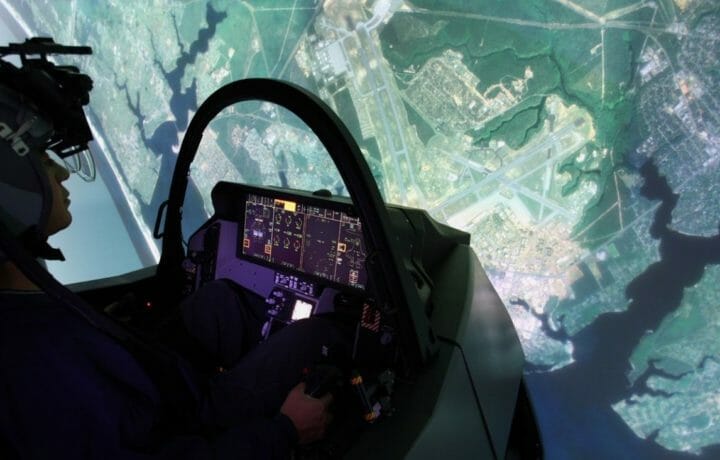Additive printing, also known as 3D printing, has been increasingly used to speed the development of prototypes, while the United States military has also relied on the technology to “print” parts that aren’t produced any longer. These components, which are created by precisely adding nanogram-size drops of a liquid binding agent onto a powder bed, form the part layer by layer.
When heated or cured, it leaves a solid, high-strength part.
This technology is now employed to keep a number of United States Air Force platforms in service – notably the Northrop Grumman B-2 Spirit and Boeing B-52 Stratofortress, as the additive printing was employed to replicate old parts. The United States Marine Corps also used 3D printing to maintain its aging Assault Amphibious Vehicles (AAVs), which first entered service in 1972.
Now the technology is being employed not only to fabricate parts that aren’t made any longer, it is being used to speed the production of new systems.
Printing F-35 Simulator Cockpits
Though we’re not quite at the point where one can simply press Ctrl + P to start the development of brand-new components, aerospace giant Lockheed Martin highlighted the fact that we’re getting a lot closer. The defense contractor announced that its F-35 Training & Logistics team completed the shipment of the first two 3D-printed F-35 Full Mission Simulator (FMS) cockpits, which were delivered to MCAS Cherry Point last fall.
The FMS is considered to be the most advanced, high-fidelity flight simulator there is, and it is now used to train U.S. Air Force, Navy, and Marine pilots as well as those from international F-35 partners. It was first introduced in 2017 and then updated in 2021. It features aircraft components such as the stick and throttle that pilots would use on the actual aircraft.
As the number of F-35s in service increases, the U.S. military and partners will require additional FMS to train those pilots.
The printing of the additive cockpit was also a far more intricate process than printing a spare part for the B-2 or B-52 bombers. The entire process – performed at the company’s Orlando, Florida, Rotary and Mission Systems site – took about two months. This is still a considerable improvement over the nearly year-long time it would take to manufacture the cockpit without the additive printing capabilities.
Lockheed Martin has posted a time-lapse video of the cockpit being manufactured.
“It’s a good representation of the capability of additive manufacturing and what the team can do when all of the functions work together. It also paves the way for any future large additive programs,” explained Jared Stewart of the program’s hardware engineering staff.
“With F-35 and F-16, we have a good baseline for what our capabilities are, and now we are diving deep into understanding how we can eliminate defects, streamline processes and increase efficiency,” Stewart added.
Digital Transformation
Lockheed Martin has also indicated that the 3D-printed cockpit is a key tenet of Digital Transformation. When its team first started this initiative, they had to look at this extremely complex part and thoroughly redesign it with a focus on manufacturability, and focused on benefits that could be realized across the product lifecycle – including quality, cost, and schedule.
The same technology is now being leveraged on other platforms and will become the benchmark for training devices.
In addition, the team utilized digital twin technology to visualize the production floor and understand where the 3D-printed cockpits can be inserted across the line. The decrease in time needed to produce the physical cockpit also has allowed faster delivery for customers.
“It’s great being part of a team that helps to get these resources out to the military and improving the overall cost and turnaround times for producibility. Now we will focus on leaning out the process, increasing the throughput and making it more efficient,” said Michael Scheidker, senior hardware engineer of the F-35 Training & Logistics team.
Through the use of additive printing, the total lead time to obtain conventional parts has been reduced by 75%. Moreover, it has reduced the total part count of conventional metal parts by 70%. That can significantly simplify the manufacturability of the FMS while allowing the F-35 team to rapidly increase the speed at which simulators can be delivered to the warfighter.
Lockheed Martin is now on track to deliver the next 26 FMS products, including 14 of those being 3D-printed cockpits.




